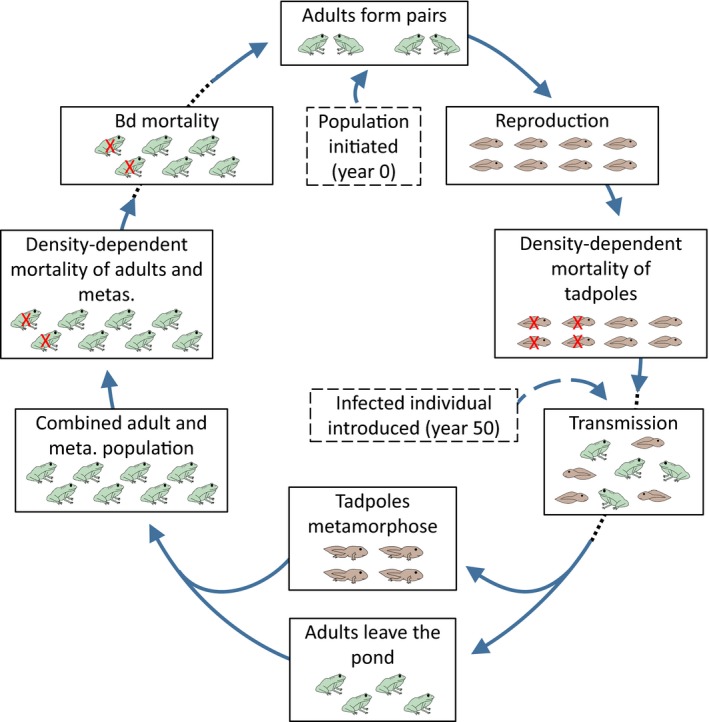Figure 1.

Schematic representation of the steps in our model. The population is initiated in the aquatic environment with adult population size at carrying capacity. Adults form pairs randomly and susceptibility to Bd has a heritable component that is passed on to the offspring. Reproduction is followed by density‐dependent mortality of tadpoles (based on tadpole carrying capacity) and transmission of Bd. The population then transitions to the terrestrial environment with tadpoles completing metamorphosis (becoming metamorphs: “metas.”) and adults leaving the pond. Density‐dependent adult mortality occurs (based on adult carrying capacity) followed by Bd‐associated mortality (based on individual genotype‐specific mortality; GSM), after which the population returns to the aquatic environment to begin a new year. A single infected individual is introduced in year 50; in years 1–49 both the transmission and Bd mortality steps are omitted
